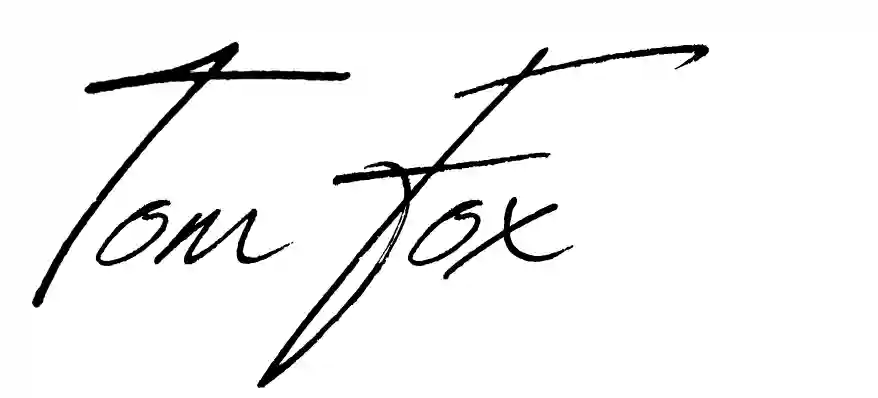Framing 101: How to Sell Like a Master Illusionist
Mastering the Frame: How to Control Perception and Close More Deals
Alright, master closers, let’s talk about a sales superpower that often gets overlooked: framing.
This isn’t about fancy picture frames or window displays, but about how you present yourself, your product, and your price to influence your prospect’s perception of value.
Think of it like setting the stage for a play.
The same lines delivered in a dingy basement theater will have a completely different impact than those delivered on a grand Broadway stage.
Framing is about creating that “Broadway stage” for your sales pitch.
Done with the endless sales theory and ready to actually close more deals? If you want to skip the ‘WHY’ and get straight to the ‘HOW’?
Make “Coffee with a Closer” your next move. Get weekly, battle-tested action steps delivered directly to your inbox – no fluff, just results.
Why Framing Works: A Peek Inside the Mind
Framing isn’t just about clever wordplay; it’s about strategically leveraging our innate psychological tendencies to shape perceptions and guide decisions.
Here’s a closer look at the mental magic behind it:
1. Anchoring Bias: Setting the Stage for High Value
- The First Impression Effect: Our minds tend to latch onto the first piece of information we receive about something, creating a mental “anchor” that influences how we interpret subsequent information.
Example: If you start a negotiation by presenting a high initial price, you set an anchor that makes subsequent lower prices seem more reasonable, even if they’re still higher than your target.
- Setting the Value Baseline: By framing your product or service as high-value from the outset, you establish a positive anchor that makes it harder for prospects to justify a lower price or dismiss its importance.
Example: Instead of leading with a basic package, start by showcasing your premium offering with all the bells and whistles. This sets a high-value anchor, making the other options seem more appealing in comparison.
Scarcity Principle: The Lure of the Limited
- The Fear of Missing Out (FOMO): We are wired to place a higher value on things that are perceived as scarce or exclusive. Limited availability triggers a sense of urgency and desire, making us more likely to act quickly.
Example: “This offer is only valid for the next 24 hours” or “We only have a limited number of these in stock.”
- Creating Exclusivity: By framing your product or service as something special that not everyone can have, you increase its perceived value and desirability.
Example: “This is an exclusive opportunity for our top clients” or “This program is by invitation only.”
Social Proof: The Power of the Crowd
- The Herd Mentality: We are social creatures who look to others for cues on how to behave and what to value. When we see others endorsing something, it increases our trust and confidence in it.
Example: Testimonials, case studies, and endorsements from satisfied customers can be powerful forms of social proof.
- Building Credibility: By demonstrating your expertise and popularity, you leverage social proof to enhance your credibility and influence.
Example: Mentioning your impressive client list, highlighting awards and recognition, or showcasing your social media following can all contribute to social proof.
Contrast Effect: The Power of Comparison
- Relative Perception: Our perception of something is heavily influenced by what it’s compared to. By strategically presenting options or highlighting contrasts, you can make your product or price seem more appealing.
Example: Present a more expensive option alongside your target product to make the latter seem more affordable in comparison.
- Highlighting Value: By contrasting your product’s benefits with the limitations of alternative solutions, you can emphasize its unique value proposition.
Example: “Our competitors offer basic features, but we provide a comprehensive solution that includes X, Y, and Z.”
“Framing isn’t about trickery; it’s about strategically aligning perception with reality to create win-win outcomes.”
Tom Fox
Authority Bias: The Influence of Expertise
- Trusting the Experts: We are more likely to trust and follow the lead of people who are perceived as credible experts or authority figures.
Example: Doctors, scientists, and industry leaders often hold positions of authority that influence our perceptions and decisions.
- Establishing Credibility: By showcasing your knowledge, experience, and credentials, you can establish yourself as an authority figure in your field, increasing the likelihood that prospects will value your recommendations.
Example: Highlighting your years of experience, advanced degrees, or industry certifications can help build your authority.
By understanding these psychological principles, you can use framing effectively to guide your prospects towards a decision that benefits both of you.
Framing Yourself: The Art of High-Value Positioning
You are the conductor of this sales orchestra. To command attention and respect, you need to project an aura of value and scarcity.
Here’s how to frame yourself as a sought-after resource:
- Time is of the Essence: “My schedule is packed, but I’m making an exception for you because I believe in this opportunity.”
- Selective Engagement: “I typically work with larger clients, but I’m intrigued by your project and willing to make an exception.”
- High Demand: “I’ve got another client eager to jump on this, so let’s move quickly if you’re serious.”
- Busy Bee: Have your phone ringing off the hook (even if it’s your mom calling to remind you to pick up milk). This subtle cue reinforces your in-demand status.
- Strategic Presence: “I happen to be in your area today. How about we grab a coffee and finalize the details?”
Framing Your Product: The Allure of Exclusivity
Don’t just talk about features and benefits. Frame your product as something unique, desirable, and even a little bit exclusive.
Here’s how to create that “must-have” aura:
- The Insider’s Edge: “This is a game-changer that’s not widely known yet. You’ll be ahead of the curve.”
- The Premium Experience: “This is for those who appreciate the best and are willing to invest in quality.”
- The Scarcity Play: “We only have a limited number of these available, so don’t miss out.”
- The Transformation Story: “Imagine the impact this will have on your business. You’ll be able to [achieve desired outcome] with ease.”
Framing the Price: Anchoring Value
Don’t shy away from the price tag. Frame it as an investment, a reflection of value, and a gateway to exclusive benefits.
Here’s how to position your price effectively:
- The Value Proposition: “This is a premium solution with a premium price tag, but the ROI is undeniable.”
- The Stretch Goal: “This may require you to stretch your budget, but the long-term benefits will far outweigh the initial investment.”
- The Exclusivity Angle: “This isn’t for everyone, but for those who recognize its value, it’s a game-changer.”
- The Opportunity Cost: “Think about the cost of not investing in this. You could be missing out on [potential gains].”
Ready to master the art of strategic perception and influence your prospect’s decisions? Sign up for the “Coffee with a Closer” and receive practical techniques to leverage framing, control the narrative, and craft compelling sales presentations that maximize your impact and close more deals.
Mastering the Frame: Your Sales Superpower
By mastering the art of framing, you can influence perceptions, create desire, and ultimately close more deals.
It’s about understanding the psychology of persuasion and using it ethically to guide your prospects toward a decision that benefits both of you.
So, go out there and frame your way to sales success!
Remember, it’s not just about what you say, but how you say it.

PS: Want the most powerful persuasion hacks delivered straight to your inbox? Sign up for the “Coffee with a Closer” today!


